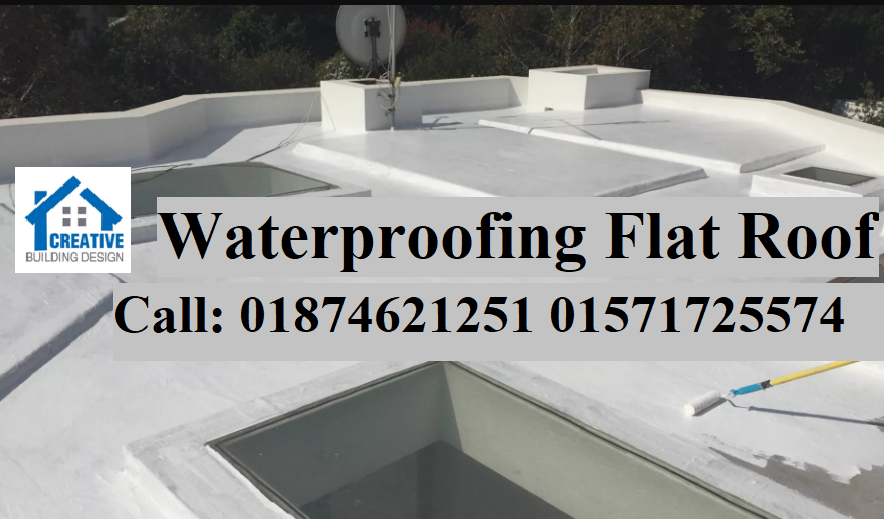
Flat roofs are a common feature on many commercial and industrial buildings, as they offer several advantages in terms of both construction and costs. However, flat roofs are also more susceptible to water damage than pitched roofs, as water can pool on the surface and seep into the building.
This is why it is essential to ensure that your flat roof is properly waterproofed to protect your property from the elements. There are several different waterproofing options available for flat roofs, and the best option for your property will depend on several factors, including the climate, the location of the roof, and the type of roofing material.
Contents
Here are a few of the most common waterproofing options for flat roofs:
1. TPO roofing membrane:
TPO (thermoplastic polyolefin) is a single-ply roofing membrane that is made from a combination of polypropylene and ethylene-propylene rubber. It is a flexible and durable option that is resistant to UV rays, tears, and punctures.
2. PVC roofing membrane:
PVC (polyvinyl chloride) is a synthetic plastic that is used in a variety of applications, including roofing. PVC roofing membranes are made from a solid sheet of PVC that is then coated with a UV-resistant resin. PVC roofing is a durable and long-lasting option that is resistant to fire, wind, and punctures.
3. EPDM rubber roofing:
EPDM (ethylene propylene diene monomer) is a synthetic rubber that is commonly used in roofing applications. It is a flexible and durable material that is resistant to fire, wind, and UV rays.
How much do the 3 best waterproofing applications for a flat roof cost?
When it comes to flat roofs, one of the most important considerations is waterproofing. After all, a flat roof is essentially a large, flat surface that is exposed to the elements, so it is vital to make sure that it is properly protected from water damage. Several different waterproofing applications can be used on flat roofs, and the cost of each will vary depending on the specific product and the size of the roof.
However, in general, the costs of waterproofing a flat roof can range from a few hundred dollars to several thousand dollars. Of course, the best way to get an accurate estimate of the cost of waterproofing your flat roof is to consult with a professional roofing contractor. They will be able to assess your roof and recommend the best waterproofing solution for your specific needs.
How do you seal a flat roof membrane?
It is important to seal a flat roof membrane to prevent water damage and leaks. There are several ways to seal a flat roof membrane, including using a sealant or tape. Sealants are typically applied to the seams of the roofing material to create a water-tight barrier. Tape can also be used to seal seams and joints.
When using tape, be sure to use tape that is designed for use on roofs, such as butyl tape. In addition to sealing the seams, it is also important to seal any penetrations in the roof, such as pipes and vents. This can be done with sealant or flashing.
Flashing is a metal or plastic material that is placed over the penetration and then sealed. Once the roof is sealed, it is important to inspect it regularly for any signs of leaks or damage. If you see any damage, be sure to repair it immediately to prevent further damage.
Is liquid rubber good for flat roofs?
Liquid rubber is a popular choice for flat roofs because it is easy to apply, provides a seamless waterproof barrier, and is long-lasting. Liquid rubber can be applied to most roofing substrates, including metal, asphalt, and concrete. It is also UV-resistant and can withstand extreme temperatures, making it ideal for use in harsh climates.
Conclusion:
Waterproofing for flat roofs is a process by which a layer of material is applied to the roof surface to prevent water from penetrating the roof. There are many different types of waterproofing materials available, and the most appropriate type will depend on the specific roof and the climate in which it is located.
Related Post:
- Best Waterproofing & Damp Proofing Company
- Waterproofing And Dampproofing Specialist In Bangladesh
- Acrylic Roof Coating Waterproofing
- Bituminous Membrane in Bangladesh
- Cementitious waterproofing in Bangladesh
- Concrete Waterproofing Company in Bangladesh
- Foundation Waterproofing Membrane In Bangladesh
- How To Make Concrete Roof Waterproof?
- How To Waterproof Basement Concrete Floor?
- How To Waterproof Concrete Wall?
- Is Concrete Paint Waterproof?
- Polyurea Spray Coating
- Polyurethane Waterproofing In Bangladesh
- Rooftop Waterproofing In Bangladesh
- Waterproofing Chemical in Bangladesh
- Waterproofing In Bangladesh
- Waterproofing Membrane In Bangladesh
